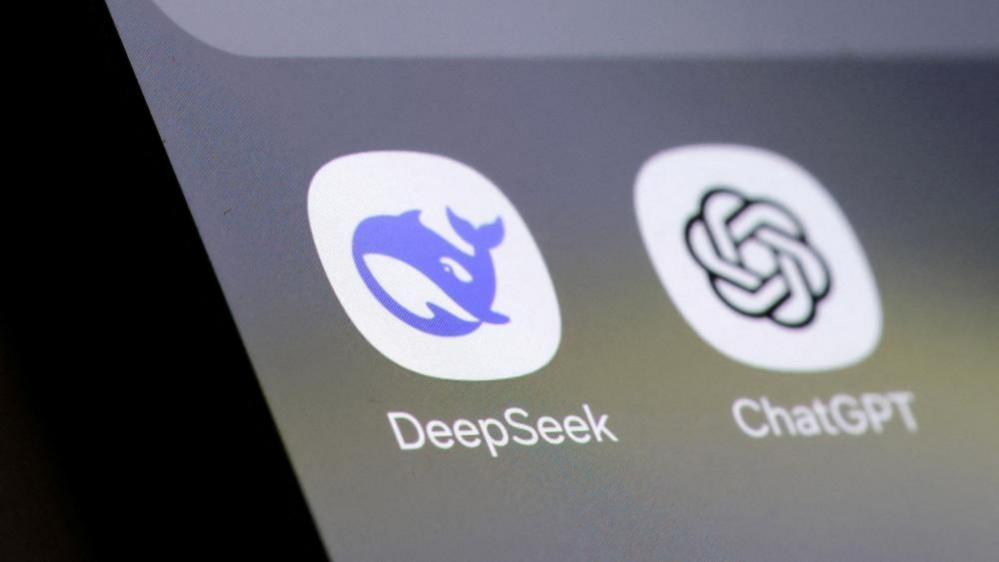
Josephswanek
Add a review FollowOverview
-
Founded Date October 22, 1928
-
Sectors Banking
-
Posted Jobs 0
-
Viewed 45
Company Description
The Chinese Ai Firm Trump Claims is a ‘Wakeup Call’ To America’s Tech Hub
DeepSeek says its newest AI design is as great as those of its American competitors, was less expensive to build and it’s readily available for totally free. What does that mean for US AI supremacy?

A Chinese company called DeepSeek, which just recently open-sourced a large language design it declares performs along with OpenAI’s most capable AI systems, is now the white hot focal point for the AI neighborhood. Its tech is being lauded as one of the very best open-source oppositions to top American AI designs, stiring anxieties about China’s formidability in the magnifying global AI race and spurring U.S. startups to re-examine their own work after a foreign rival seemingly did so a lot more with so less resources.
In late December, the little Chinese laboratory, based in Hangzhou, launched V3, a language design with 671 billion specifications, which was apparently trained in two months for simply $5.58 million. That’s a cost orders of magnitude less than OpenAI’s GPT-4, a larger model at an approximated 1.8 trillion criteria, however developed with a $100 million cost. Last week, DeepSeek threw down another onslaught, releasing a model called R-1, which it declares rivals OpenAI’s o1 design on what’s called “reasoning jobs,” like coding and fixing intricate math and science problems. OpenAI charges users $200 each month for such models; DeepSeek uses its own free of charge.
The power of DeepSeek’s model and its pricing are already shifting the method American AI start-ups run their organizations. It’s an inexpensive, engaging option to offerings from incumbents like OpenAI, Jesse Zhang, CEO of Decagon, which builds AI agents for customer support, informed Forbes. DeepSeek’s brand-new model will likely force American AI giants like OpenAI and Anthropic to review their own prices.

Eiso Kant, CTO and co-founder of Poolside AI, a unicorn that builds AI for software application engineering, informed Forbes that DeepSeek’s strength is in its engineering ability to do more with less.
“What DeepSeek is revealing the world is that when you put a strong emphasis on making your training compute-efficient, you can do a lot,” he stated. “There’s unbelievable things that you can continue to eject of these Nvidia chips to make them incredibly more efficient.”
“It’s sort of wild that someone can enter and spend hundreds of countless dollars for a closed source design. And then all of an unexpected you get an open-source one that’s simply out there free of charge.”

With OpenAI’s o1 design allegedly bested on particular criteria, some startups have already started getting data to train more advanced systems, Manu Sharma, CEO of information labeling company Labelbox informed Forbes. “I think the AGI race is kind of reset in lots of ways,” he said. “We are going to just see a lot more competitiveness throughout the board.”
Alexandr Wang, the billionaire CEO of training data AI, recently called the design “earth shattering.” And Aravind Srinivas, CEO of $9 billion-valued AI search start-up Perplexity has actually said that he prepares to integrate the design into the main search item. AI chip company Groq has already added DeepSeek’s R1 design to its language processing systems. (In June, Forbes sent Perplexity a cease and desist after accusing the start-up of using its reporting without approval.)
Others are less amazed. Writer CEO May Habib told Forbes she’s not surprised that DeepSeek’s models, trained on a substantially smaller budget plan, are able to match the most smart designs in the US. In October, Writer introduced a model that was trained with just $700,000, when it cost $4.6 million for OpenAI to develop a model with similar abilities. The business utilized artificial information to lower its training expenses.
“Even before DeepSeek’s model exploded on the scene, we have actually been saying that these models are commoditizing. They’re getting increasingly more distributed,” Habib said.
Over the weekend, as buzz about the company grew, DeepSeek went beyond ChatGPT on Apple’s app shop, ranking No. 1 free of charge app downloads in the United States. Then, on Monday, several U.S. tech stocks nosedived as panic around DeepSeek’s effective model launch spread. By day’s end, AI chip behemoth Nvidia’s market cap had been shaved down almost $600 billion.
It was a staggering upending of the AI world order. “It’s type of wild that someone can enter and spend hundreds of countless dollars for a closed source design,” Greg Kamradt, president of ARC Prize, a nonprofit that standards AI models, told Forbes. “And after that all of an unexpected you get an open-source one that’s just out there free of charge.”
For weeks DeepSeek’s designs have actually been lauded by a few of the most popular names in the AI world including Meta’s chief AI researcher Yann LeCun, OpenAI cofounder Andrej Karpathy and Nvidia’s senior research study scientist Jim Fan. But news of the company’s newest achievement has actually sent out America’s AI heavyweights scrambling to figure out just how the Chinese company is getting such impressive outcomes while spending a lot less cash.

“Deepseek R1 is AI‘s Sputnik minute,” investor-billionaire Marc Andreessen wrote on X.
“The release of DeepSeek, AI from a Chinese company, must be a wakeup require our markets that we require to be laser-focused on competing to win.”

Despite the pomp and bombast of the Trump administration’s current AI announcements, DeepSeek has actually heightened worries that the U.S. could be losing its AI edge – particularly because it’s been so effective in spite of the tight US export manages that avoid it from using Nvidia’s state of the art AI chips. The company’s latest achievement is a sobering counterpoint to Project Stargate, a joint venture between OpenAI, Oracle and Japanese tech conglomerate Softbank, to invest $500 billion in AI facilities.
Ahead of a conference with House Republicans in Florida on Monday, Trump acknowledged the threat. “The release of DeepSeek, AI from a Chinese company, ought to be a wakeup require our industries that we need to be laser-focused on completing to win,” he stated.
There are cautions to DeepSeek’s most current accomplishment. Researchers have actually found its AI models tend to self-censor on topics that are sensitive to the Chinese Communist Party (CCP). Security researcher Jane Manchun Wong informed Forbes DeepSeek’s models do not react to concerns about Chinese President Xi Jinping and the 1989 Tiananmen Square protests. Beyond this, there are privacy issues. Data entered into DeepSeek’s designs is kept in servers located in China, according to its policies.
Divyansh Kaushik, a vice president at national security advisory company Beacon Global Strategies alerted Forbes against individuals utilizing DeepSeek without extensive vetting. “Unless we can have clear national security and free speech assessments of Chinese models, they need to be dealt with like propaganda arms of the CCP,” he said. “They must be dealt with as Huawei on steroids.”
The problem is DeepSeek’s worth proposition: a cutting-edge AI thinking model that’s totally free to utilize and open in the closed, fee-based AI world being developed by companies like OpenAI and Anthropic. “It’s better to have a Chinese design that is open source versus an American model that is closed source,” stated Labelbox’s Sharma.

